Classic Swedish Cinnamon Buns
There’s something undeniably comforting about a freshly baked kanelbullar, which are classic Swedish cinnamon buns. These soft, spiced treats, adorned with a crunchy sprinkle of pearl sugar, are the perfect companion to a warm cup of coffee. In this post, I’m sharing my take on the iconic Swedish bake, celebrating both its rich tradition and unique flavour.
Whether you’re baking for Kanelbullens dag (Cinnamon Bun Day) or simply because you can’t resist the smell of warm cinnamon and cardamom, these buns will transport you straight to Sweden. Let’s dive into the history, the technique, and of course, the deliciousness of these classic Swedish cinnamon buns.
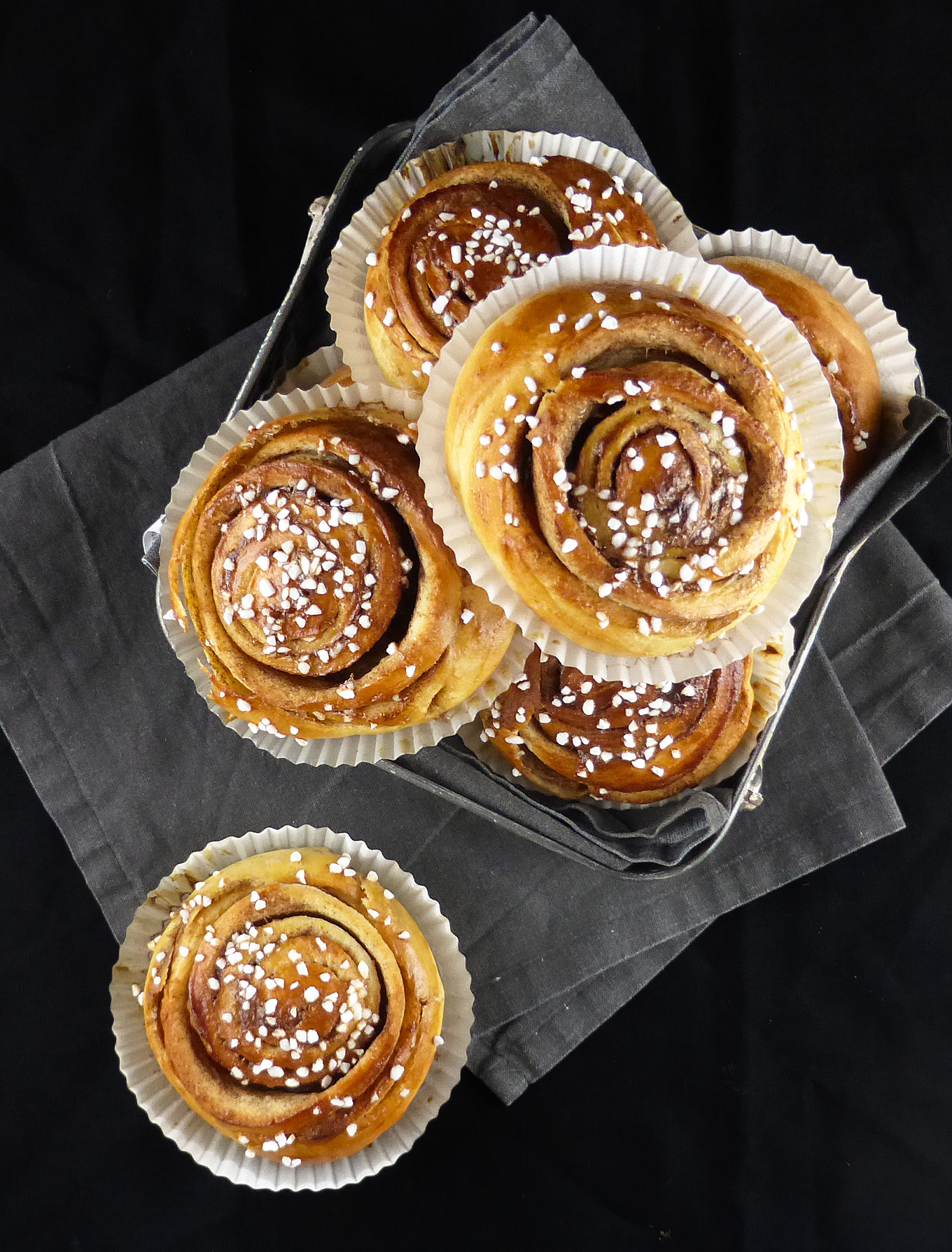
Cinnamon bun day
Yep. Like you ever need an excuse to eat a cinnamon bun. Right?
Cinnamon bun day was introduced in 1999 by Sweden’s Home Baking Council (Hembakningsrådet) to celebrate traditional Swedish baking and to mark their 40th anniversary. It’s since become a firmly established tradition, the kind people genuinely look forward to. Bakeries and cafés gear up for it days in advance, shelves piled high with glistening, sugar-topped buns. At home, it’s a day for warm ovens, clouds of flour, and the comforting ritual of fika: that uniquely Swedish pause in the day where coffee and something sweet go hand in hand.
Despite living here for many years, I’d never actually made my own kanelbullar before. Shocking, I know. I’ve made chocolate cinnamon buns and coffee cinnamon buns. I’ve even gone one step further in celebration of all things cinnamon bun and made cakes and monkey bread with the traditional flavours. Basically everything except the Swedish classic.
Maybe it’s because they’re so iconic, and practically woven into the fabric of Swedish life. I felt weirdly intimidated by them. There’s a kind of quiet reverence around the kanelbulle. And rightly so. The soft, spiced dough, the buttery cinnamon filling, and that final dusting of pearl sugar is inimitable. They’re simple, but there’s something about them that hits differently. The smell alone, all warm cardamom and cinnamon, is enough to make you feel nostalgic, even if you didn’t grow up with them.
So this year, I decided it was time. I rolled up my sleeves, found the cardamom (eventually), and finally gave them a go. And honestly? I can’t believe I waited that long.
A brief history of kanelbullar
Kanelbullar have become one of the most iconic bakes in Sweden, but they’re actually a relatively modern addition to the country’s baking traditions. They began appearing in Swedish kitchens in the 1920s, after World War I, when previously expensive ingredients like white flour, sugar, butter and spices became more affordable and widely available. Before that, sweet enriched breads were a luxury. But with improved access to baking staples, home bakers embraced the opportunity to create something special, and so the cinnamon bun was born.
By the 1950s, these buns had firmly established themselves as a fika favourite, served alongside strong coffee and good company. And now? You’ll find them everywhere from petrol stations to high-end bakeries.
Which spices are used in traditional kanelbullar?
Of course, the real star of the show is cinnamon. Swedes love cinnamon. It’s one of those universally comforting spices that somehow makes everything better. I use it constantly in breads, cakes, cookies, you name it. And in kanelbullar, it’s the signature swirl. Rich, golden filling packed with butter, sugar and cinnamon. Honestly, it’s hard to beat. The smell alone is enough to stop you in your tracks.
What sets Swedish cinnamon buns apart from other versions is the use of cardamom in the dough. It’s a small addition, but one that makes a big difference. A pinch of ground cardamom is worked into the dough itself, giving the buns a gently spiced, aromatic flavour that balances beautifully with the sweetness of the filling. It might seem like an unusual choice if you’re not familiar with Scandinavian baking, but cardamom is actually a staple in Swedish kitchens, especially when it comes to sweet breads and buns. We even put it in cake. It adds warmth and depth without being overpowering, and once you’ve tried it, you’ll wonder why it’s not used more often.
Swedish vs. American: What’s in a name?
Although both are often called “cinnamon buns” in English, the naming differs subtly. In Sweden, we call them kanelbullar (literally “cinnamon buns”), while in the US, the term “cinnamon roll” is more common. Both are made with enriched dough, flavoured with cinnamon, and rolled into spirals, but beyond these similarities, they’ve developed into two distinct bakes.
Let’s start with the dough. Swedish buns are less sweet and more subtly spiced. The dough is typically flavoured with ground cardamom, which gives it a floral, citrusy warmth that balances the richness of the cinnamon-sugar filling. In contrast, American cinnamon rolls are all about decadence: a soft, ultra-sweet dough, often enriched with eggs and a generous amount of sugar, butter, and sometimes even cream in the filling.
Texture, shape, and the origins of cinnamon buns
Texture-wise, American cinnamon rolls tend to be softer and gooier, often served warm from the oven with thick cream cheese frosting or a sticky glaze poured over the top. Swedish buns, on the other hand, are more modestly sweet, slightly firmer in texture, and finished with a sprinkle of pearl sugar rather than icing. They’re made for enjoying with a cup of coffee, rather than as a dessert-style treat.
The shape also differs. American cinnamon rolls are typically sliced into neat spirals and baked close together, allowing them to puff up and stick. In contrast, Swedish kanelbullar are often twisted or knotted into individual buns, creating their characteristic appearance and slightly chewier edges. There’s also more variety in how they’re rolled: some are tightly coiled, while others are more rustic and open.
As for who came first: the Swedish version predates the American one, but just barely. Kanelbullar began appearing in Swedish homes in the 1920s, once ingredients like sugar, butter, and flour became more accessible. Meanwhile, cinnamon rolls were developing in the United States around the same time, likely influenced by European immigrants, including many from Scandinavia and Germany, who brought their baking traditions with them. Over time, American bakers leaned more heavily into the rich, sweet, frosted style we know today, while the Swedish version stayed closer to its everyday, coffee-break roots.
So, while they both revolve around dough, cinnamon, and comfort, the end result is quite different. One is a cosy fika companion; the other a full-on sugar rush. And honestly, there’s room in this world for both.
What is pearl sugar?
Classic Swedish cinnamon buns (kanelbullar) often get adorned with a smattering of pearl sugar: that irresistible sparkle and crunch that makes them so special. Also known as nib sugar, pearl sugar forms when sugar crystals compress into small, irregularly shaped balls. These little pearls don’t melt or dissolve when baked, which is why they remain visible on top of the buns. The result is a slight crunch and a sweet burst of flavour that perfectly complements the soft, spiced dough.
Pearl sugar isn’t just for kanelbullar. It’s a crucial part of Swedish baking, adding texture and a signature finish to a variety of treats, and I’ve used it on everything from chocolate cookies to chocolate balls. It’s the perfect way to finish off baked goods, giving them that authentic Swedish charm.
There are a few common substitutions for pearl sugar, such as crushing sugar cubes, using larger granules of brown sugar, or even sprinkling nonpareils. However, while these may work in a pinch, they won’t replicate the unique look and texture of pearl sugar. For an authentic Swedish touch, it’s definitely worth tracking down the real thing, and you can find it in Swedish online stores like Nordic Expat Shop.
Cinnamon & chocolate banana cake
Cinnamon bun sockerkaka (sugar cake)
Wholemeal cinnamon and raisin toast bread
Classic Swedish Cinnamon Buns
Ingredients
Dough (see note 1):
- 300ml (1¼ cups) milk
- 75g (⅓ cup) butter
- 400-450g (3⅓ - 3¾ cups) spelt flour (see note 2)
- 7g (2¼ tsp) dried yeast (see note 3)
- 50g (¼ cup) sugar
- ¼ tsp ground cardamom
- ½ tsp salt
Filling:
- 75g (⅓ cup) butter (room temperature)
- 60g (¼ cup) sugar
- 1 tbsp cinnamon
Additional ingredients:
- 1 beaten egg (for wash)
- pearl sugar (see note 4)
Instructions
DOUGH
Bread Machine:
- Add the milk and butter to your bread machine pan. Then add 400g (3⅓ cups) of flour, and the remaining ingredients. Take care to keep the yeast and salt separate as much as possible. Set your machine to make dough.
- On a very well-floured surface (the dough will be very sticky) work in just as much flour as you need to make a soft, pliable, but still a little tacky, dough.
Stand Mixer:
- Add the milk and butter to your stand mixer bowl, and give it a quick mix. If the butter is straight out of the fridge, it won't combine with the other wet ingredients too much, but that's okay.
- Then add 450g (3¾ cups) of flour, and the remaining ingredients. The dough should be sticky, but if you need more flour, just add a little at a time. Be careful: too much flour will result in dry bread.
- Switch to a dough hook (if you have one) and allow the mixer to knead the dough for around 10 minutes, just until soft. The dough will still feel a little tacky to the touch, but will be able to slowly drop off the hook.
- Cover the dough and leave to proof (until it has doubled in size - usually about an hour).
- When the dough is ready, knock it back, and on a floured surface, form into a rough ball.
For both methods:
- When ready, roll the dough into a rectangle with a thickness of around 1cm (just under ½") with one of the shorter sides facing you.
- Spread the butter all over the dough. Combine the sugar and cinnamon and sprinkle all over the butter.
- Gently roll up the dough. When done, place with the seam underneath.
- Cut the dough into pieces. I wanted large, soft buns so made 10. More traditional kanelbullar are a little thinner, so go with whatever thickness you fancy.
- Pre-heat the oven to 250°C (482℉).
- Place each piece in a large muffin case and place them on a large oven tray.
- Cover with a tea-towel, and leave the buns to rest for around 30 minutes.
- Give the buns a good egg wash and sprinkle with pearl sugar.
- Bake the buns for around 6-9 minutes, depending on size and thickness. Watch them carefully: They are ready when they turn a deep brown colour. Enjoy warm with a cuppa!
Notes
- I have made the dough using both a stand mixer and bread machine with identical results. I have not made the dough by hand, but I see no reason why you couldn't do so!
- You can use spelt or regular flour for this recipe (just use the same amount).
- In Sweden we have something called dried yeast. It is used both in warm liquid to proof and also added directly to flour. I am aware that the US has two options for dried yeast, and I believe instant yeast is the most similar to our dried yeast.
- If you don't have access to pearl sugar, sprinkle a little icing sugar just before eating the buns.


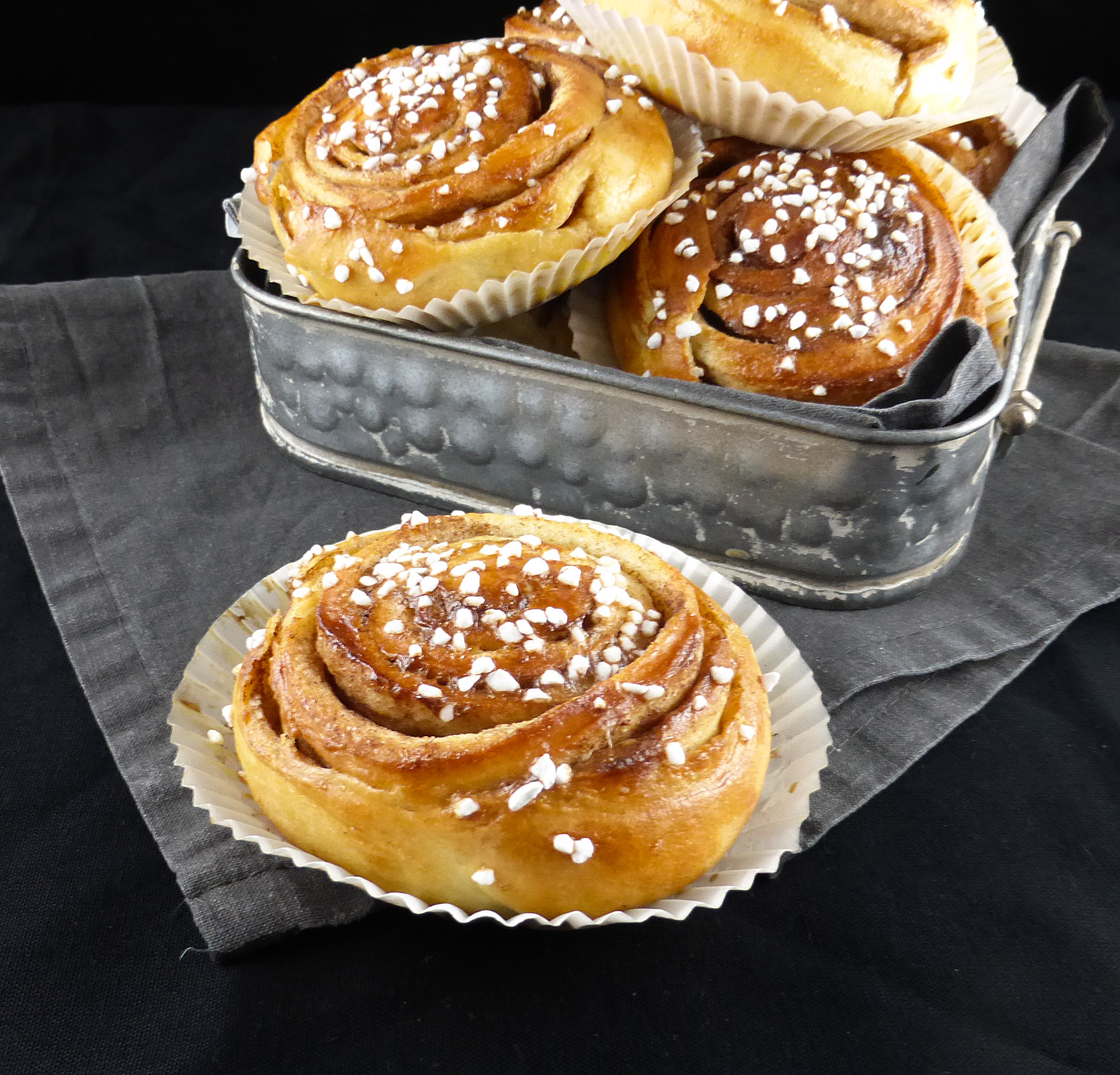


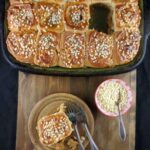

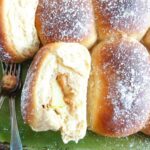
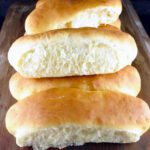
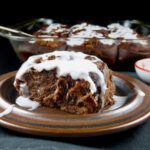
6 thoughts on “Classic Swedish Cinnamon Buns”